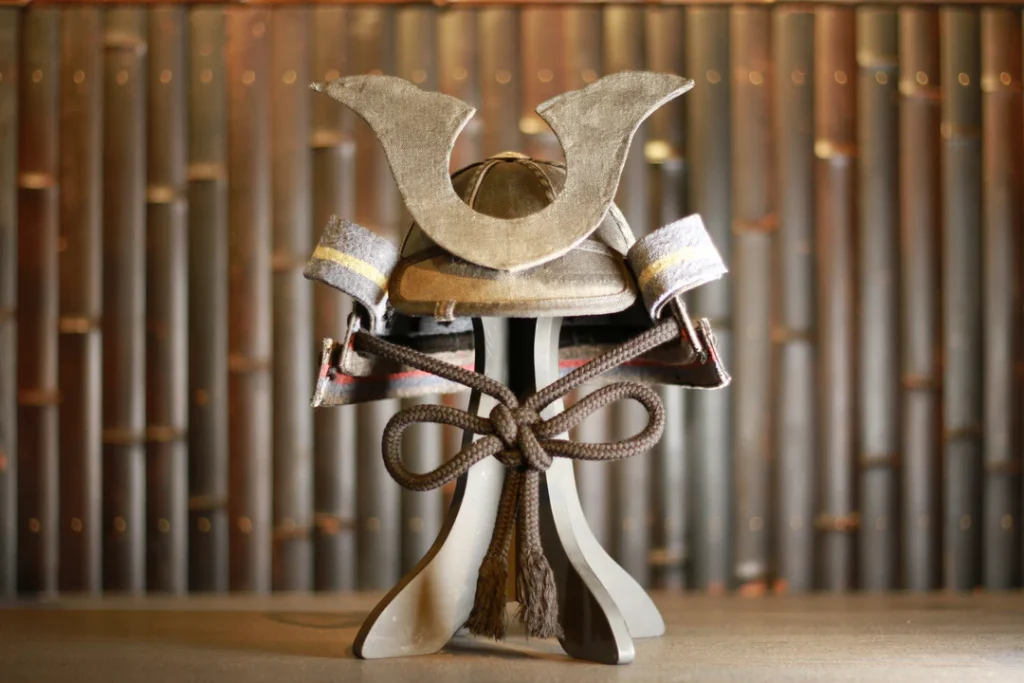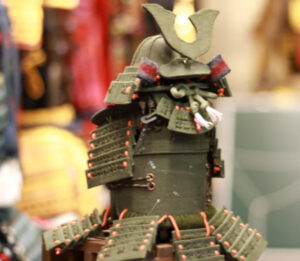The “Denim Kabuto” project is an innovative collaboration that seamlessly blends Japan’s rich samurai heritage with contemporary denim craftsmanship. Inspired by the iconic Kabuto, the traditional samurai helmet, and reimagined through the versatility of denim fabric, this project represents a unique intersection of history, fashion, and cultural storytelling.
In an era where fashion increasingly draws inspiration from cultural heritage, the Denim Kabuto stands as a testament to the power of creative reinvention. It is a tribute to the warrior spirit of the past, interpreted through the lens of modern craftsmanship and global fashion trends. The concept behind this collaboration not only pays homage to Japan’s illustrious history but also redefines how materials like denim can be adapted beyond their conventional applications.
Origins and Inspiration Behind “Denim Kabuto”
The Kabuto helmet, an essential component of a samurai’s armor, symbolizes strength, honor, and craftsmanship. These helmets were traditionally made from iron, leather, and adorned with elaborate decorations that reflected the rank and personality of the warrior. The meticulous detailing and artisanal techniques employed in their construction have long been revered as hallmarks of Japanese craftsmanship.
On the other hand, denim, a durable and versatile fabric with deep roots in Western fashion, has grown to become a global phenomenon, symbolizing casual style, resilience, and individuality. The idea of fusing these two seemingly contrasting elements—ancient Japanese armor and contemporary denim—creates a fascinating juxtaposition that bridges cultures and eras.
The Denim Kabuto concept was born from a desire to reinterpret tradition through modern materials, making historical symbols accessible to a wider audience while maintaining their intrinsic value and artistry.
The Design Philosophy: Merging Functionality and Aesthetic Appeal
The design philosophy behind the Denim Kabuto focuses on three core principles: authenticity, innovation, and craftsmanship.
Authenticity:
•Despite using a contemporary fabric, the design remains faithful to the traditional structure of the Kabuto helmet. Artisans carefully study original designs, ensuring that proportions, elements such as the crest (maedate), and construction techniques are preserved.
•The textures, washes, and stitching of denim are adapted to replicate the layered and robust appearance of traditional samurai armor.
Innovation:
•The project explores how denim’s properties—such as flexibility, durability, and ability to fade uniquely over time—can bring a fresh perspective to traditional forms.
•New techniques such as laser-etched samurai motifs, reinforced seams to mimic iron plates, and experimental dyeing processes are used to create a balance between tradition and modernity.
Craftsmanship:
•Just like the original Kabuto helmets required skilled artisans, the Denim Kabuto is crafted with meticulous attention to detail by denim specialists, using techniques like hand-stitched embroidery, distressed finishes, and indigo dyeing to create a distinctive, aged look.
Production Process: From Concept to Creation
The creation of a Denim Kabuto involves a highly specialized and multi-stage process that combines traditional craftsmanship with modern garment manufacturing techniques.
Concept Development and Research
Before production begins, extensive research is conducted into the history of samurai armor, focusing on the structural design and symbolic meanings behind various elements of the Kabuto. Collaborators include historical experts, textile engineers, and fashion designers, ensuring a well-rounded approach to the project.
Material Selection and Preparation
Choosing the right type of denim is crucial. The fabric must be:
•Durable yet lightweight: To maintain the structural integrity of the helmet.
•Easily moldable: Allowing it to take on complex, layered shapes.
•Aged and dyed: Using traditional indigo techniques to achieve an authentic, vintage look.
Once selected, the denim undergoes pre-washing and dyeing processes to enhance its texture and create unique, faded patterns that mimic the weathered look of ancient armor.
Cutting and Construction
Pattern makers carefully cut the denim into precise pieces, replicating the riveted iron plates traditionally used in Kabuto construction. These pieces are then layered and stitched using reinforced techniques to maintain both the aesthetic and functional aspects of the helmet.
Key design elements include:
•The Shikoro (neck guard): Made with layered denim panels, providing a striking visual effect.
•The Maedate (crest): Custom-made using intricate embroidery or screen-printing techniques featuring samurai-inspired symbols.
•Fastenings and Rivets: Metal elements are often incorporated to maintain authenticity while adding a contemporary edge.
Hand Finishing and Detailing
Each Denim Kabuto undergoes meticulous hand-finishing processes, including:
•Distressing: To create a vintage look.
•Embroidery: Featuring traditional Japanese motifs such as dragons, cherry blossoms, or family crests.
•Personalization: Some designs incorporate customized initials or symbolic patterns.
Cultural Significance and Modern Appeal
The Denim Kabuto is more than just a fashion statement; it is a symbol of cultural fusion that appeals to various audiences:
Cultural Enthusiasts and Collectors:
•Those who appreciate Japanese history and craftsmanship find the Denim Kabuto to be a unique collector’s item that bridges the past and present.
Fashion Aficionados:
•With the rise of sustainable and heritage-inspired fashion, the Denim Kabuto appeals to individuals who value slow fashion, artisanal craftsmanship, and meaningful design.
Streetwear and Luxury Markets:
•As collaborations between heritage and modern brands gain traction, the Denim Kabuto finds its place in the high-end streetwear scene, often featured in exclusive collections or runway presentations.
Limited Edition Releases and Collaborations
Due to the complexity and craftsmanship involved, the Denim Kabuto is often released in limited-edition batches, adding to its exclusivity. Some notable collaborations have included:
•Denim Brands: Working with renowned Japanese and international denim labels to introduce unique washes and styles.
•Streetwear Designers: Integrating the Denim Kabuto into capsule collections with modern twists.
•Cultural Institutions: Museums and art galleries featuring the piece in exhibitions that explore the evolution of Japanese armor and its modern reinterpretations.
Marketing and Global Reach
The global rollout of the Denim Kabuto has been strategically executed through:
•Social Media Campaigns: Leveraging platforms like Instagram and TikTok to showcase the craftsmanship and behind-the-scenes processes.
•Pop-up Installations: Bringing the concept to life in major fashion hubs such as Tokyo, Paris, and New York.
•Collaborations with Influencers and Celebrities: Gaining visibility through endorsements by fashion icons and cultural influencers.
Sustainability Aspect of the Denim Kabuto
As sustainability becomes a growing concern in the fashion industry, the Denim Kabuto project emphasizes ethical production practices, such as:
•Using recycled and organic denim fabrics to reduce environmental impact.
•Handcrafted techniques that minimize waste and promote slow fashion.
•Fair labor practices, ensuring that artisans are compensated fairly for their skills.
By combining heritage with sustainability, the Denim Kabuto not only honors the past but also aligns with the future of responsible fashion.
Lasting Impression of Denim Kabuto
The Denim Kabuto project successfully encapsulates the essence of merging tradition with innovation, history with modernity, and craftsmanship with contemporary fashion. Whether viewed as a work of art, a collector’s piece, or a bold fashion statement, it serves as a reminder that tradition can be reinterpreted in ways that resonate with today’s global audience.
By continuing to explore and experiment with heritage-driven designs, the Denim Kabuto sets a precedent for future fashion projects that seek to honor cultural identity while embracing innovation.
No comments yet.








